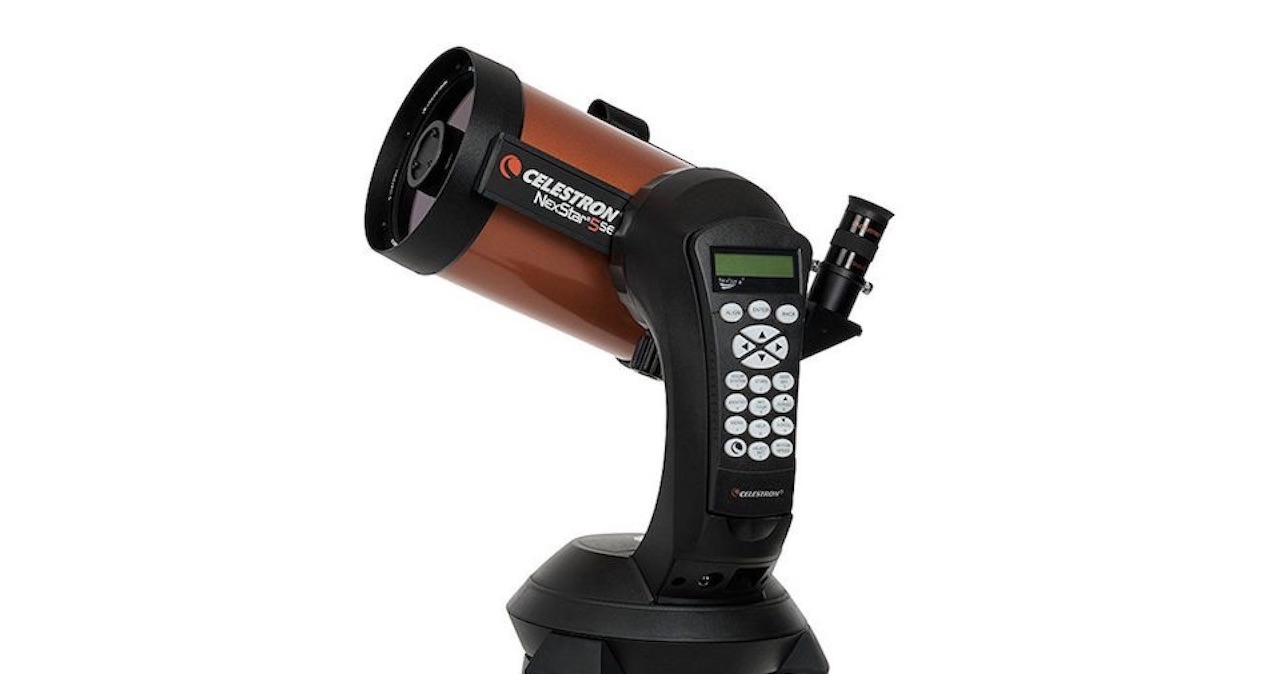Space Verdict
Combine the Celestron NexStar 6SE's flawless optical coating, its ease of use and high-quality build and you have an instrument that is built to provide excellent views of the night sky for many observing sessions to come. Not many eyepieces are provided despite this Schmidt-Cassegrain's high RRP and it does drain batteries quickly when in use, meaning that operation and add-ons come at an extra cost. A Vixen dovetail and a 1.25" eyepiece fitting make this telescope versatile, affording the astronomer the opportunity to swap its mount and increase and improve their arsenal of filters and eyepieces, whilst being mindful of its useful magnification of 354x.
Pros
- +
Flawless optical coatings for clear views
- +
No color fringing or coma
- +
Vixen dovetail for flexible mount changes
- +
Excellent tracking system
- +
High-quality build
Cons
- -
Drains batteries quickly — AC power cord required
- -
Limited accessories supplied, despite the RRP
- -
Not as portable as similar GoTo telescopes
Why you can trust Space.com
The Celestron NexStar 6SE is a telescope that’s an all-arounder, fit for a plethora of skywatching needs: especially since it can be used by beginners, who are just venturing into astronomy, and more seasoned observers with an excellent knowledge of the night sky.
Optical design: Schmidt-Cassegrain
Aperture: 150 mm (5.91")
Focal length: 1499 mm (59")
Focal ratio: f/10
Eyepiece focal length: 25 mm (60x)
Total kit weight: 21 lbs. (9.53 kg)
Mount type: Single-arm fork, alt-azimuth
Given its capabilities, this telescope is quite difficult to outgrow — it can be used as an observer's main instrument or even as an add-on to existing kit, providing the astronomer with the flexibility of a quicker, fuss-free skywatching experience over more complex setups. The NexStar 6SE is easy to accessorize with additional eyepieces, red dot finders, filters and star diagonals, which is essential for bettering your views of solar system and deep-sky targets.
The telescope offers the opportunity to dabble in astrophotography, however, you will require a T-ring or adapter if you choose to image with a CCD, CMOS or DSLR or a smartphone adapter for photography with your iPhone or Android. Many beginners might find the idea of using a GoTo telescope daunting, but Celestron’s comprehensive manuals and software will put any worries to bed.
- Related: Best telescopes: Top picks for beginners, viewing planets, astrophotography and all-arounders
Celestron NexStar 6SE: Design
- Sturdy, robust build
- StarBright XLT optical coating for crisp views
- Eight AA batteries drain quickly

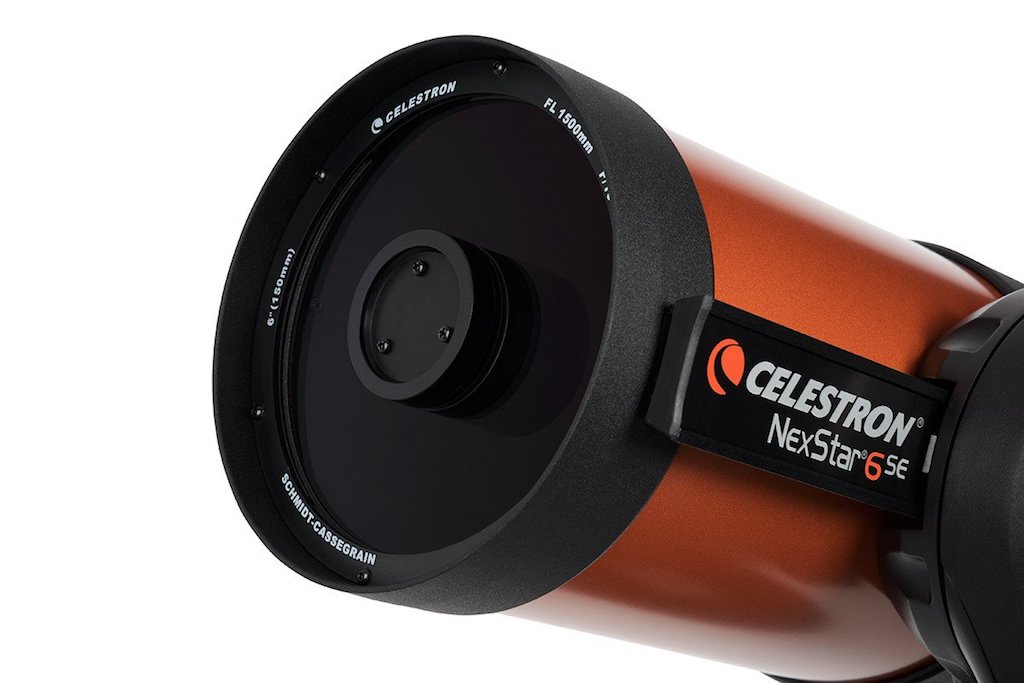
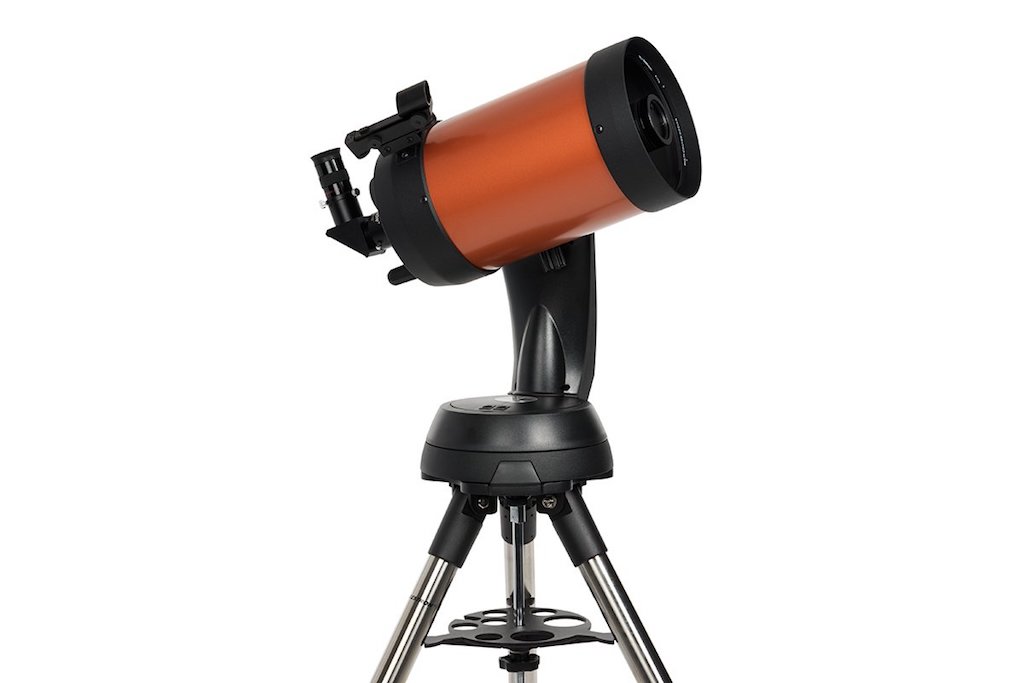
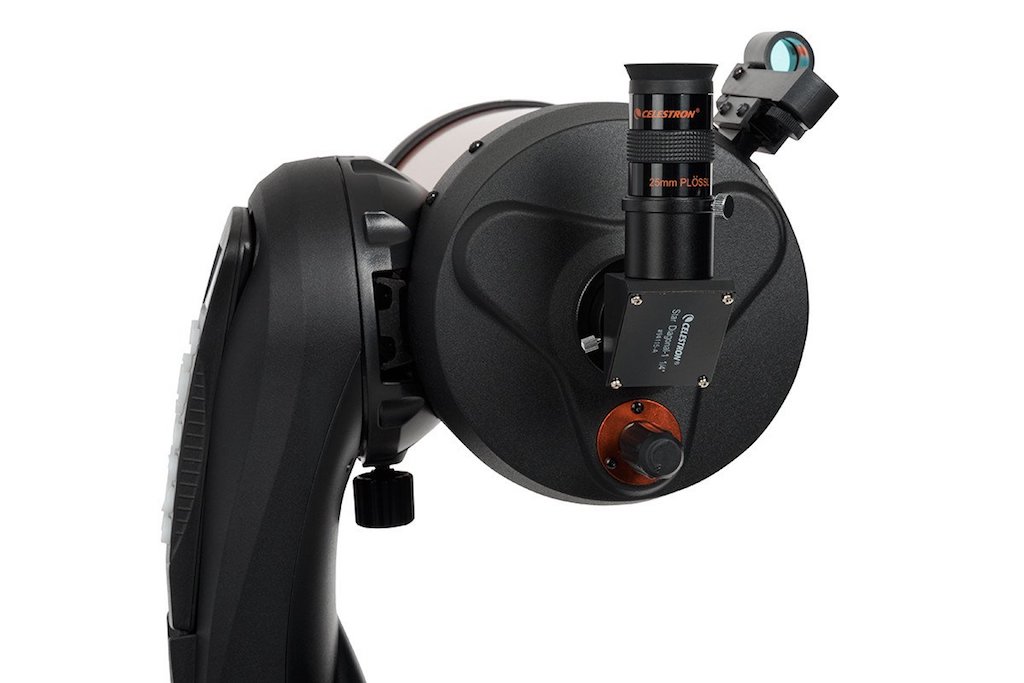
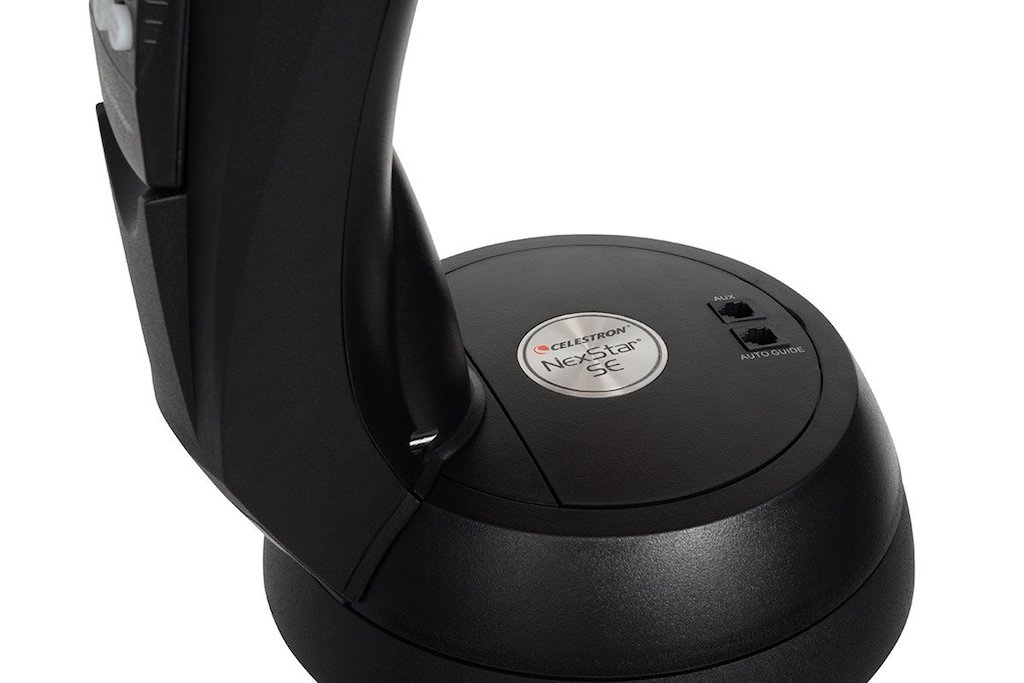
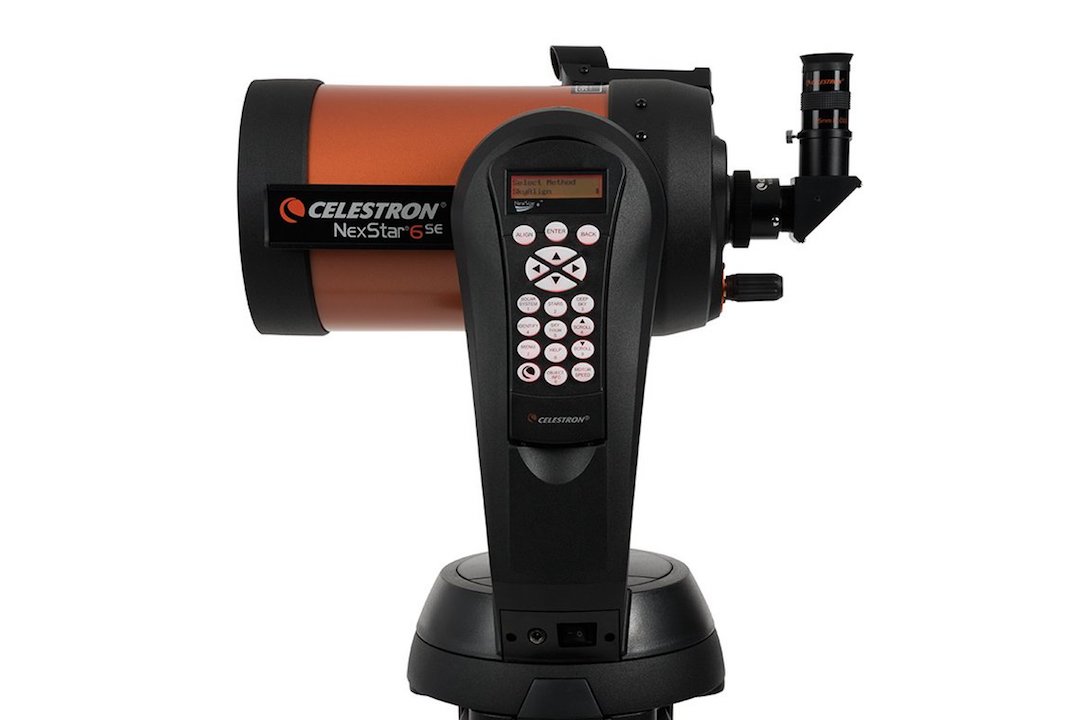
A single 25mm Plössl eyepiece is supplied with the Celestron 6SE to provide a magnification of 60x, but so much more can be achieved from the optical system, so we advise purchasing a selection of eyepieces and filters — bearing in mind that the highest useful magnification is 354x — to get the very best out of this telescope.
Setting this Schmidt-Cassegrain up took next to no time at all, and we were impressed with the quality of many of its components, especially its red dot finder and sturdy stainless steel tripod. The robust build of the NexStar 6SE promises to last years of observing sessions, provided it is treated with care. Additionally, since catadioptric telescopes can succumb to moisture during observations, a dew shield would be a worthy investment to protect the optical system and prolong the telescope's lifetime.
Weighing in at 21 lbs. (9.53 kilograms), the Celestron 6SE is a touch on the heavy side due to the technology and components compacted into it: a minor inconvenience for those who might need assistance in transporting their 'scope from one location to another. Despite this, the NexStar 6SE boasts quality over lighter instruments, so we don't consider this to be a major setback in the design.
What is quite a large flaw is the requirement of eight AA batteries to operate the computerized alt-azimuth fork mount. Sadly the NexStar 6SE drains batteries quite quickly, making using it quite frustrating when the computer "clocks out" whilst you're engrossed in observing. Over time — and with constantly replacing the batteries — using the telescope has the potential to become quite an expensive enterprise.
Undeterred, we tried out rechargeable batteries as a means to investigate an alternative route for powering the NexStar 6SE, but discovered that the telescope would act strangely with low power and found a quick loss of charge was still a problem. We strongly recommend purchasing an AC power cord from Celestron — unfortunately, this is not included with the telescope.
Celestron promises a great deal when it comes to the operational abilities of this instrument, so we were delighted to discover that the NexStar 6SE did exactly what it says on the tin when we took it out to test on a clear December evening.
For one, the star alignment — which employs Celestron's SkyAlign technology and enables calibration for accurately finding targets — was impressively simple, and it wasn’t long before we were all set up and ready to tour the winter night sky.
Celestron NexStar 6SE: First light and functionality
- Noisy motorized mount and obvious vibration
- Accurately tracks targets
- No colour-fringing or visual defects
Our first target was the Orion Nebula (Messier 42), which can be found just below Orion’s Belt and is easily visible to the naked eye as a fuzzy patch, glowing at magnitude +4. Using the control to instruct the NexStar to view this diffuse nebula, the computerized mount ran smoothly and the GoTo technology was very accurate in locating objects. The Trapezium Cluster, for instance, is nestled at the heart of the Orion Nebula and was found to be aligned close to the centre of the field of view.
When we brought the heart of the star-forming region into view we did notice a degree of vibration while focusing but, once finished, observations could be taken in without any hindrance. Thanks to the excellent StarBright XLT optical coating our observations of the nebula and its stellar members were very crisp, bright and clear, with no defects in the optics.
While the telescope slews to its target — this model possesses nine speeds — the mount does make a great deal of noise, particularly when we used the moderate to fast settings. If you find the noise off-putting and are happy to observe without a computerized mount, it’s quite easy to switch over to a manual one given that the tube possesses a Vixen-style dovetail. Remember though, you will need a Vixen adapter if you want to fit the tube to another Celestron mount.
Heading back inside to warm up with a hot drink, we decided to give the NexStar’s lunar, solar and sidereal tracking a test and left it focused on a star. Upon returning to the telescope 30 minutes later, we found that our target hadn’t drifted out of the field of view, highlighting the instrument’s suitability for long-exposure astrophotography.

With the nearly-full moon taking pride of place quite late into the evening, we took the opportunity to view our natural satellite’s cratered surface. The lunar views that we saw were impressive: the NexStar revealed well-defined crater walls and lunar mare to a very high standard — the craters Copernicus and Tycho were particularly impressive and crystal clear using the modest 5.91” aperture.
With gas giant Jupiter also at a good position in the sky and a few degrees away from the moon, the NexStar made short work of locating the planet and its four largest satellites: Io, Europa, Ganymede and Callisto. Jupiter was visible in the field of view as a bright disk, with Ganymede and Europa appearing as sharp points of white light flanking the giant’s left limb, while Io and Callisto could be found relatively near to the planet’s right. Faint brown and cream bands were visible across Jupiter's surface.
As we discovered when observing the Orion Nebula, views through the Schmidt-Cassegrain’s optics were impressively clear and bright with no chromatic aberration — or colour fringing — evident. Jupiter will only continue to make an excellent target by increasing the telescope’s magnification, something we highly recommend either by using a Barlow lens as well as additional eyepieces with a 1.25” fitting. A blue filter will provide excellent contrast, playing up the rills and festoons in the gas giant's cloud layers and promote easy viewing of the planetary king's famous storm: the Great Red Spot.
Celestron NexStar 6SE: Verdict
The NexStar 6SE is a great representation of Celestron's iconic telescope range. Given its capabilities and revolutionary technology, the price tag is reasonable, but the package does lack a good selection of eyepieces that would provide an even greater variety of views. The setup offers a lifetime of observations provided it is treated with care and little-to-no maintenance is carried out on the optics and computerized mount.
The NexStar 6SE's alignment technology takes the hassle out of calibrating the instrument and, once completed, the GoTo system is exceedingly accurate in locating targets at the touch of a button. The telescope's database boasts 40,000 targets to slew to but, despite the useful magnification of 354x, it's not possible to view all objects with clarity even with extra accessories, such as eyepieces and a Barlow Lens. In some cases though, astrophotography picks out some of the fainter targets that are visible in telescopes with larger apertures.
The GoTo facility does drain batteries and is a tad on the noisy side when in operation, but a constant power supply and taking the telescope to a remote location (if you're concerned about waking the neighbors!) are easy fixes to an otherwise superb instrument.
Join our Space Forums to keep talking space on the latest missions, night sky and more! And if you have a news tip, correction or comment, let us know at: community@space.com.

Gemma currently works for the European Space Agency on content, communications and outreach, and was formerly the content director of Space.com, Live Science, science and space magazines How It Works and All About Space, history magazines All About History and History of War as well as Science, Technology, Engineering, Arts and Mathematics (STEAM) kids education brand Future Genius. She is the author of several books including "Quantum Physics in Minutes", "Haynes Owners’ Workshop Manual to the Large Hadron Collider" and "Haynes Owners’ Workshop Manual to the Milky Way". She holds a degree in physical sciences, a Master’s in astrophysics and a PhD in computational astrophysics. She was elected as a fellow of the Royal Astronomical Society in 2011. Previously, she worked for Nature's journal, Scientific Reports, and created scientific industry reports for the Institute of Physics and the British Antarctic Survey. She has covered stories and features for publications such as Physics World, Astronomy Now and Astrobiology Magazine.
